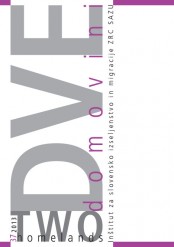Japanese Language Support for Migrant Children in Japan: Needs, Policies, Activities, Problems
Keywords:
Japanese migrant policies, multicultural coexistence, networking, language education, identityAbstract
The present paper presents an overview of the background of migrant foreign residents of Japan, with a special emphasis on recent legal reforms and ensuing changes in the status of long-term foreign residents in Japan. It presents the problems faced by migrant children whose native language is not Japanese, especially their difficulties in learning both Japanese and their mother tongue, and related difficulties in coping with everyday life and identity oscillations. It concludes with an overview of different approaches to problem solving which are being introduced by local organisations and spreading to the society at large, and which aim at multicultural coexistence in which immigrants are not seen as temporary guests but as members of society.
Downloads
References
Kawahara, Toshiaki, Yamamoto, Tadayuki (2004). Tagengo shakai ga yatte kita – Sekai no gengo seisaku Q&A (Multilingual Society is Here – Q&A on Linguistic Policies Around the World). Tokyo: Kurosio.
Kawakami, Ikuo (2005). Indoneshia nanmin ukeire 30nen o furikaeru – Watashitachi wa nani o mananda no ka (Looking Back at 30 Years Since the Acceptance of Refugees from Indonesia – What Have We Learned?). Paper presented at Betonamu nanmin no “ima”, 30nen o mukaete (Vietnamese Refugees’ ‘Now’, Approaching the 30th Year) in Kobe on 26 Nov. 2005.
Kawakami, Ikuo (2007). “Idōsuru kodomotachi” to gengo kyōiku (‘Moving Children’ and Language Education). Henbōsuru gengo kyōiku – Tagengo, tabunka shakai no riterashīzu towa nanika (Changing Language Education – Literacies in a Multilingual and Multicultural Society) (eds. Michiko Sasaki et al.). Tokyo: Kurosio, 85–106.
Kiyota, Junko (2004). Bogo wo katsuyōshita naiyōjūshi no apurōchi no kokoromi – rainichi chokugo no gaikokujin jidō o taishōni (An Attempt at a Content-Centered Approach Using the Mother Tongue of Immigrant Children Immediately after Entering Japan). Ningenbunkaronsō 6, 199–210.
Knez, Mihaela (2009). Jezikovno vključevanje (in izključevanje) otrok priseljencev. Obdobja 28: Infrastruktura slovenščine in slovenistike (ed. Marko Stabej). Ljubljana: Znanstvena založba Filozofske fakultete, 197–202.
Knight, John (1995). Municipal Matchmaking in Rural Japan. Anthropology Today 11/2, 9–17.
Kojima, Yu (2001). In the Business of Cultural Reproduction: Theoretical Implications of the Mail-Order Bride Phenomenon. Women’s Studies International Forum 24/2, 199–210.
Miyajima, Takashi (2003). Tomo ni ikirareru Nihon e – Gaikokujin shisaku to sono kadai (Living Together: Policies for Foreign Residents in Japan). Tokyo: Yuhikaku.
Morgan, Charlie V., Hoffmann, John P. (2007). International Marriages in Japan: A Prefecture-Level Analysis. International Journal of Sociology of the Family 33/1, 157–182.
Morimo, Takeo (2009). Tabunka kyōsei o mezasu karikyuramu no kaihatsu to jissen – Gakkai – gakkō – kyōshi no torikumi (Development and Implementation of a Curriculum for Multicultural Coexistence – Efforts by Academics, Schools, Teachers). Ibunkakan kyōiku 30, 25–41.
Ōta, Haruo (2000). Nyūkamā no kodomo to Nihon no gakkō (Newcomer Children in Japanese Public Schools). Tokyo: Kokusai-shoin.
Noyama, Hiroshi (2008). Renkei ni okeru kōdinētā no yakuwari to kadai – chiiki ni okeru kenshū ya wākushoppu o jirei to shite (The Role and Tasks of Cooperation Coordinators – Case Studies of Local Training and Workshops). Ibunkakan kyōiku 28, 32–43.
Satō, Shinji, Kumagai, Yuri (eds.) (2011). Shakai sanka o mezasu nihongo kyōiku – Shakaini kakawaru, tsunagaru, hatarakikakeru (Japanese Language Education Aimed at Social Participation – Social Involvement, Connection, Appeal). Tokyo: Hituzi syobō.
Tokui, Atsuko (2008). Chiiki ni okeru nyūkamā shien to renkei – Ibunka kyōikugaku no shiza kara (Local Cooperation and Support for Newcomers – From the Point of View of Intercultural Pedagogy). Ibunkakan kyōiku 28, 2–9.
Tokunaga, Tomoko (2008). ‘Firipinkei nyūkamaā’ seito no shinro ishiki to shōrai tenbō – Jūyōna tasha to rainichi keii ni chūmoku shite (Carreer Awareness and Future Perspective of Filipino ‘Newcomer’ Pupils – Focusing on Significant Others and Immigration Background). Ibunkakan kyōiku 28, 87–99.
Tsuchiya, Chihiro (2005). Tsutaeau nihongo kyōiku jisshū – Gaikokujin shūjū chiiki de no kokoromi (Communicative Japanese Teacher training: Experiments in Areas with High Concentrations of Foreign Nationals). Tokyo: Akashi shoten.
Vižintin, Marijanca Ajša (2009). Sodelovanje slovenskih osnovnih šil z učitelji maternih jezikov otrok priseljencev. Dve domovini / Two Homelands 30, 193–213.
Vižintin, Marijanca Ajša (2010). Medkulturno izobraževanje in medkulturna občutljivost. Dve domovini / Two Homelands 32, 139–150.
Yamazaki, Kaori (2009). “Idō” jidai no kyaria kyōiku – Nyūkamā kōkōsei no jirei (Carreer Guidance in the Age of “Moving” – Case Study of Newcomers in High-School). Ibunkakan kyōiku 30, 91–103.
Downloads
Published
How to Cite
Issue
Section
License

This work is licensed under a Creative Commons Attribution-NonCommercial-NoDerivatives 4.0 International License.
Authors guarantee that the work is their own original creation and does not infringe any statutory or common-law copyright or any proprietary right of any third party. In case of claims by third parties, authors commit their self to defend the interests of the publisher, and shall cover any potential costs.
More in: Submission chapter





